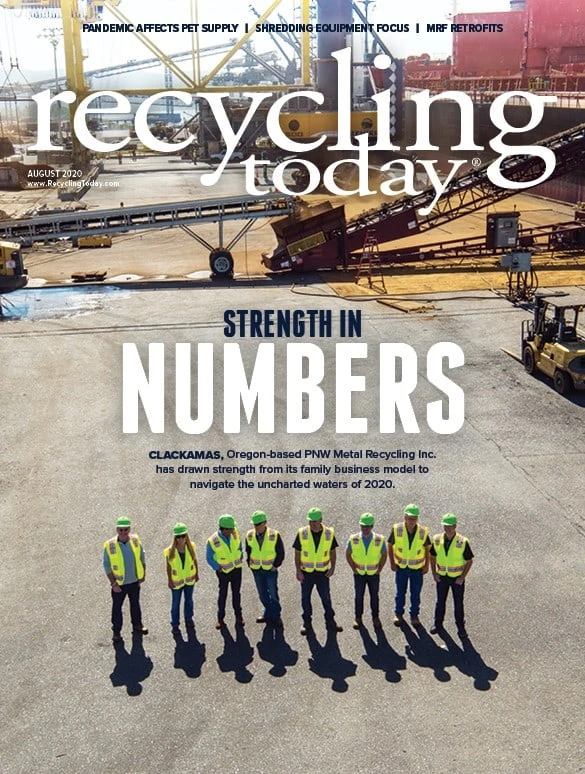
Earlier this summer, the World Wildlife Fund (WWF) released a report titled “Transparent 2020,” which details the plastic consumption of global companies Keurig Dr Pepper, McDonald’s Corp., Procter & Gamble, Starbucks and The Coca-Cola Co. The report is part of a broader initiative called ReSource: Plastic and reveals just how little recycled content these companies use currently.
The inaugural “Transparent 2020” report, available at https://resource-plastic.com/pdf/Transparent2020.pdf, found that these five companies collectively used 4.2 million metric tons of plastics in 2018 (Keurig Dr Pepper, 208,000 metric tons; McDonald’s, 153,000 metric tons; Procter & Gamble, 605,000 metric tons; Starbucks, 190,000 metric tons; and The Coca-Cola Co., 3 million metric tons), only 8 percent of which were sourced from recycled material.
The report’s findings were calculated using the ReSource Footprint Tracker, which measures how much and what kinds of plastics are being used and where they likely are ending up upon disposal, according to WWF. Based on these calculations, the report calls for these and other companies to eliminate or find substitute materials for unnecessary plastics, particularly small plastics that tend to go to the residue line in material recovery facilities. It also suggests investing in solutions that reduce virgin plastics use and increase recycled or sustainably sourced bio-based content.
“Plastics can’t be recycled if they aren’t collected. This is an issue that some of the sources interviewed for the PET Commodity Focus speak to.”
WWF calls for the doubling of the global plastics recycling rate, adding that the U.S. represents the single greatest opportunity for recycling because of these companies’ high sales volumes coupled with limited recycling infrastructure and high landfill rate.
Reclaimers of plastics ranging from polyethylene terephthalate (PET) to polypropylene have the capacity to process more of these materials if they are recovered. For example, according to the “2018 United States National Postconsumer Plastic Bottle Recycling Report,” PET reclaimers used 80 percent of their capacity that year, while high-density polyethylene reclaimers used 73 percent.
However, these plastics can’t be recycled if they aren’t collected. This is an issue that some of the sources interviewed for the PET Commodity Focus speak to. Some of them voice their support for the expansion of bottle bills, while others suggest recycled-content mandates are needed. It’s something of a chicken-and-egg scenario.
Which of these possible solutions do you believe could have the greatest effect on plastic recycling? Let us know by sharing your thoughts via Twitter and tagging @RecyclingToday.

Explore the August 2020 Issue
Check out more from this issue and find your next story to read.
Latest from Recycling Today
- Orion ramping up Rocky Mountain Steel rail line
- Proposed bill would provide ‘regulatory clarity’ for chemical recycling
- Alberta Ag-Plastic pilot program continues, expands with renewed funding
- ReMA urges open intra-North American scrap trade
- Axium awarded by regional organization
- Update: China to introduce steel export quotas
- Thyssenkrupp idles capacity in Europe
- Phoenix Technologies closes Ohio rPET facility





